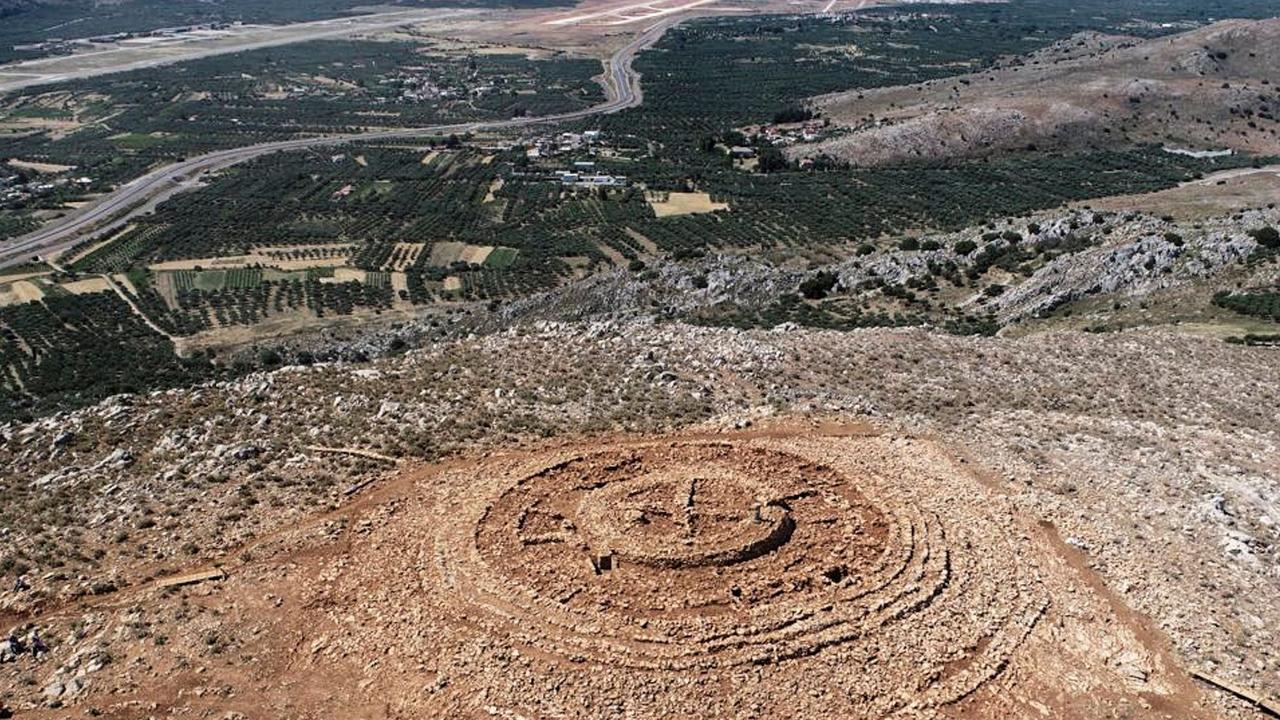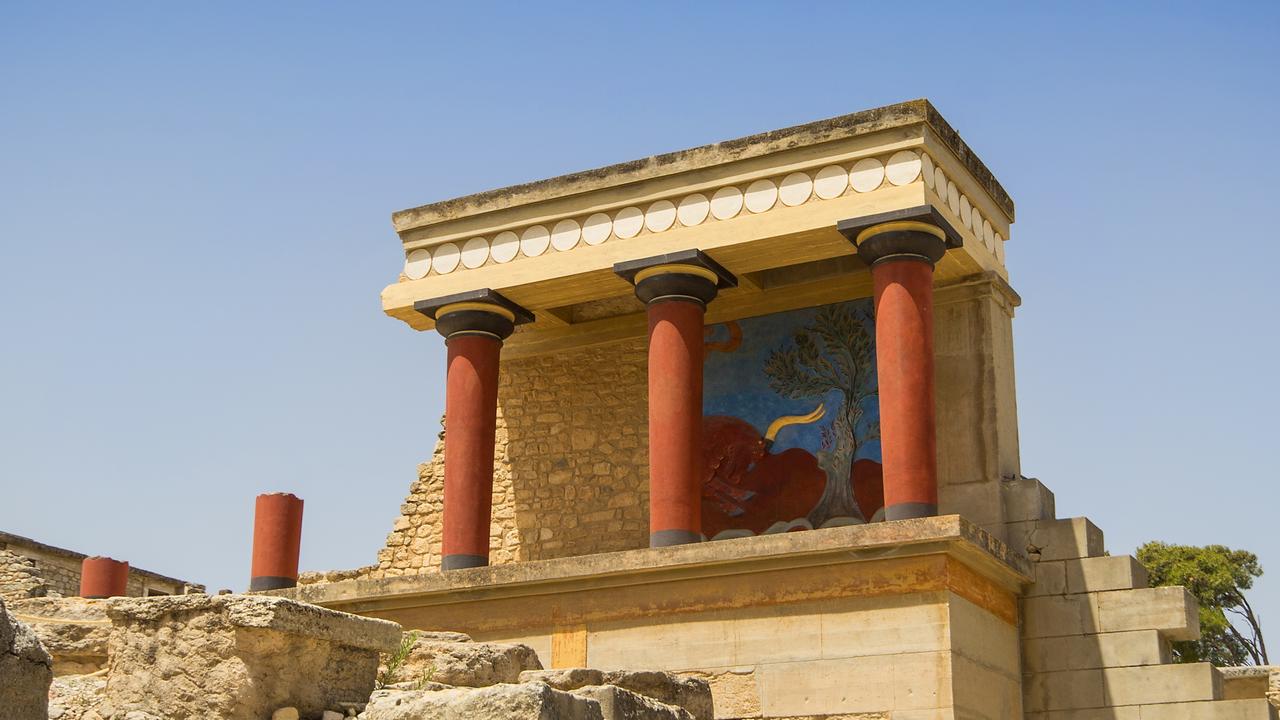A mysterious 4000-year-old stone circle uncovered on the island of Crete is baffling archaeologists
A mysterious 4000-year-old, circular stone structure with maze-like walls in Greece has archaeologists scratching their heads as they try to work out what the unique site was used for

READING LEVEL: GREEN
A mysterious 4000-year-old, circular stone structure found on a Greek hilltop is baffling* the archaeologists* who discovered it.
The Greek government said the unique building appeared to have maze-like walls from the time of the Minoan civilisation*. It was uncovered on top of a 500m-high hill near the town of Kastelli on the island of Crete.
“It is a unique discovery of particular interest,” said Greece’s Culture Minister Lina Mendoni.
The circular stone building, about 1800 square metres in size, contains eight stone rings with small walls intersecting them to form rooms. It is the first of its kind found on Crete.
Archaeologists said the purpose of the complex is still unknown but would have been used between 3700 and 4000 years ago.
A large number of animal bones were found on the site.

The stone circle overlooks Crete’s new international airport, which is under construction until 2027 and is expected to handle 10 million travellers every year.
The discovery means a planned radar for the airport will have to be relocated.
WHO WERE THE MINOANS?
According to the World History Encyclopedia*, the Minoans were sea-traders* who lived on Crete in the Mediterranean Sea during the Bronze Age.
With their unique art and architecture, and the spread of their ideas through contact with other cultures across the Aegean Sea, the Minoans made a huge contribution to the development of western culture and how we live today.

There were multiple buildings full of passageways and blind alleys arranged to make it difficult for a person to find their way around. They were often called palaces even though royal families did not live in them.
Other popular features were brightly painted frescoes* on their buildings showing scenes such as bull-leaping and processions, elegant stone vases, and pottery with vibrant decorations of marine life. The people wore expensive gold jewellery.
Although the Minoans developed a written language known today as Linear A, it is still not able to be understood. As a result, all of our knowledge of society on Crete during the Minoan period comes from archaeological evidence.
GLOSSARY
- baffling: confusing
- archaeologists: people who study history by digging up old buildings and items used by people in the past
- Minoan civilisation: people who lived on Crete during the Bronze Age
- encyclopedia: a set of books or website with information on many subjects
- sea-traders: people who make a living by moving and selling items across the sea
- frescoes: a mural painting technique that involves painting with water-based paint directly onto wet plaster
EXTRA READING
What is Greek mythology?
Exploring the lost city of Pompeii
Digging up historical past beneath our cities
QUICK QUIZ
1. How was the ancient circle discovered?
2. How old is it thought to be and what Age does it come from?
3. Why is it described as labyrinth-like?
4. Its discovery has upset plans for which major building?
5. Name three popular features from the Minoan civilisation.
LISTEN TO THIS STORY
CLASSROOM ACTIVITIES
1. Gathering Invitation
Create an invitation to an event happening in this newly discovered stone structure 4000 years ago. Use the information provided in the Kids News article to give you some clues on what events might have been happening in this type of structure in that era.
Design your invitation below to share with classmates as to what sort of event you think might have been held there.
Your invitation should include all the details of the event as a normal invitation would.
Time: allow 25 minutes to complete this activity
Curriculum Links: English, History, Personal and social, Critical and creative thinking.
2. Extension
How intriguing to have a written language that modern-day citizens cannot understand. Develop your own code for a language and write a simple sentence to a friend. Give them a key to solve your code and answer your question back to them (For example, 1=A would be a simple code).
Time: allow 20 minutes to complete this activity
Curriculum Links: English, Personal and social, Critical and creative thinking.
VCOP ACTIVITY
1. News: condensed
Identify the most important pieces of information in this article and write a condensed version of it using 50 words or less.
Draw a picture or diagram to support your condensed news story.
Time: allow 25 minutes to complete this activity
Curriculum Links: English, Science

